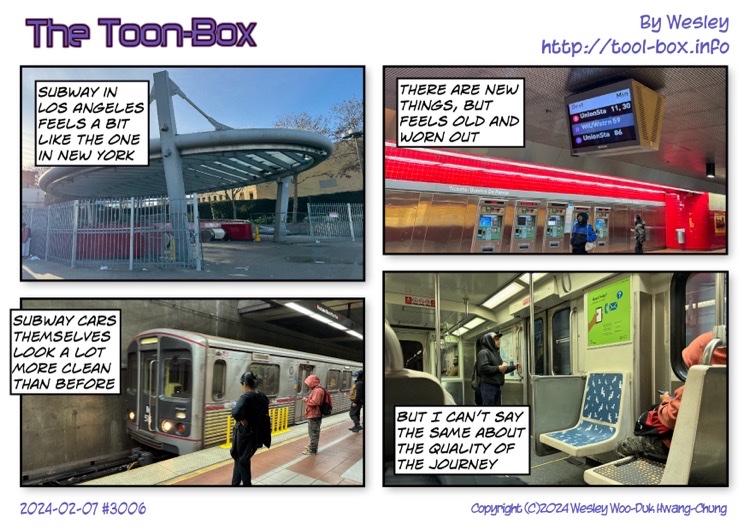Entries tagged as USA
embassy passport Seoul visa Han-gang iPhone 5S river COEX Samseong skyline smog subway KPX Naju relocation cabinet A1522 A1524 Gangnam Hyundai Sonata 2 iPhone 6 Plus Kodak DC280 Suwon Yeongdeungpo Yeongtong Yongsan breakfast McMuffin meal box pancakes travel building Hyundai KEPCO Parnas Seolleung airplane airport Gimpo Lotte World Seoul National University restaurant train mall Gwangju A1549 A1586 AT&T Canada Hong Kong iPhone 6 Japan Korea LTE T-Mobile Verizon A1533 iPhone 5 iPhone 5C SK Telecom A1530 KT LGU+ VoIP VoLTE barometer belt case camera Focus Pixels iOS 8 iPad iPad mini iPhone 3GS iPhone 4S Reachability screen protector Apple Store repair screen Screen Glue Ferris wheel game Goat Simulator iPhone 6+ Touch ID Fukuoka Fukuoka Airport Incheon International Airport leather case Vega LTE-A battery charger 3DMark Geekbench Kraken Octane performance SunSpider A1633 A1634 A1687 A1688 iPhone 6S iPhone 6S Plus Chungjang-ro beverage ginger ale soda strawberry cookie maple syrup A1779 earphone Canal City Hakata Hakata Shinpu Japanese food ramen Ramen Stadium cosmetics Duty-Free Hiyoko Bread Royce Chocolate Europe O2E Smart Multi-Charger power plug UK USB Osaka Celine Chung iPhone 7 Wesley Woo-Duk Hwang-Chung castle park takoyaki apple cider soft drink China iOS lunar calendar Moon iOS 10 arrow Hayun Chung hoop Sung-Eun Kim traditional amusement Tuho Apple Maps Bitgaram City Cortex Camera adapter cellphone JooN 2 watch Apple Watch cable watchOS 2 iPhone 4 Bluetooth GPS lightning Micro-USB pen car electric shopping Bolt EV iPhone X road Chevrolet London Vodafone weather KTX Mugunghwa SRT Elgato Eve HomeKit Incipio IoT Koogeek Leviton light fixture lights power switch smart plug Apple TV 4th Gen electricity Philips Hue sensor MacBook Air outlet apple computer HDMI laptop MacBook Pro USB-C duck lake swan statue HDD keyboard monitor Xbox cooler electric fan Mac mini lamp LED tester Native Union iMac card reader hub memory storage iOS 13 iPhone 11 Pro MicroSD Irn-Bru Ribena Schweppes Volvic agave syrup red ginseng Oronamin-C chocolate Glonsan Vermont nourishment drink honey butter milk soy Doutor ice beer Bundaberg Lemon Lime Bitters lemonade pencil Live Wire Mountain Dew black tea grapefruit coffee shop latte Garcinia Cambogia Get It Slim convenience store Nexon Play Stardium Energy apple juice calamansi green tea Pokémon tea Mind Point Chilsung Strong Cider coffee bread health drink juice peanut sandwich chocolate chip cookies macaroon Starbucks Saigon Latte snack chicory Chole-Control affogato ice cream jelly Nagoya Coca Cola gift tube pink bergamot rain pumpkin Burj Khalifa Dubai observatory spring snow Tazo Berry Trifle cafeteria Chuseok persimmon icicle sidewalk snowman candy grape hot chocolate bar peach bus Gangneung hockey ice rink Olympic and Paralympic Games Pyeongchang Skeleton Los Angeles vending machine Asiana Airlines Vision Pro station box anchovy galbi onigiri Lotte Vegetable Cracker rice cake Divergent Insurgent Megabox movie movie theatre raccoon Uchi Zoo zoo potato nachos Terminator Genisys shopping cart Self/Less crackers salad tuna Pepero Pepero Day Kinder Joy toy cotton candy bacon baguette cheese oven bungeoppang English muffin Boncafé Coffee Pop Mockingjay popcorn The Hunger Games fan Ramune CGV chicken cola fries hot dog Cedrata citron emart No Brand water watermelon corn dog sweet potato Burger King Heathrow Airport Underground Korean Air Paddington Station toilet strike double decker Big Ben London Eye Nelson's Column Trafalgar Square fish & chips cruise ship HMS Belfast Tower Bridge Tower of London entertainment system Volo TV kimchi ramyeon rice supermarket British Museum van Assyria Egypt Greece Persia sticker store fish koi carp pond hotel Jindo resort gift certificate robot Applico apricot pie donut Dunkin Donuts carrot Dole Fruit Pop iOS 15 iPhone 13 Pro Apple Arcade Apple Music Apple TV 4K Apple TV+ beet AirPod Mac Studio kiwi fruit pear iOS 16 butadon museum tower boat Busan hydrofoil iPhone XS AirTag emergency Tokyo electric vehicle app virtual reality elementary fire middle police post office school election animation dinosaur Dooly Ssangmun chicken nugget KTX-Sancheon pigeon Daejeon pork cutlet tonkatsu bakery Sung Sim Dang McDonald’s wrap bookstore construction Noryangjin Galaxy S10 Samsung Bundang Line Cheongmyeong express Giheung original Ring Bar Ball sausage commute Korail time table Gwangju Songjeong Station Gyeonggang Line Honam Line BRT government complex Osong Station Sejong capsule Dazaifu Shinto shrine Hakata temple udon
Picking up and unboxing the Apple Vision Pro
Posted by Wesley on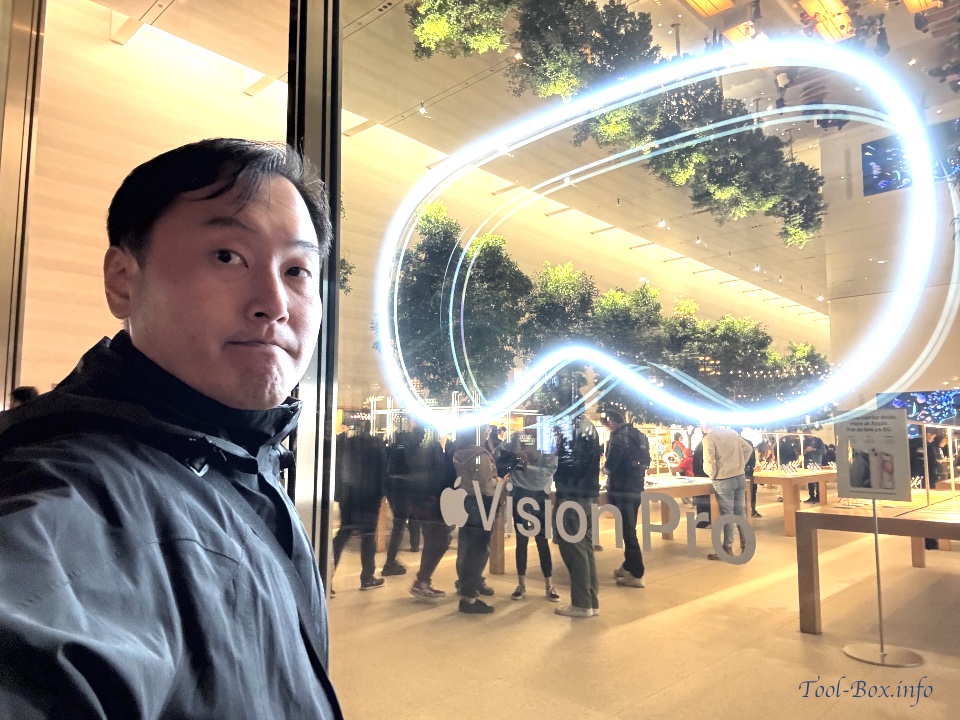
Apple launched its first so-called spatial computing device called Vision Pro on February 2, 2024, only in the United States. As someone who had keen interest in wearable computers for quite some time, and is big fan of all things Apple, I had to get my hands on a set. So I was able to make it to Apple The Grove in Los Angeles on the launch day and do just that.
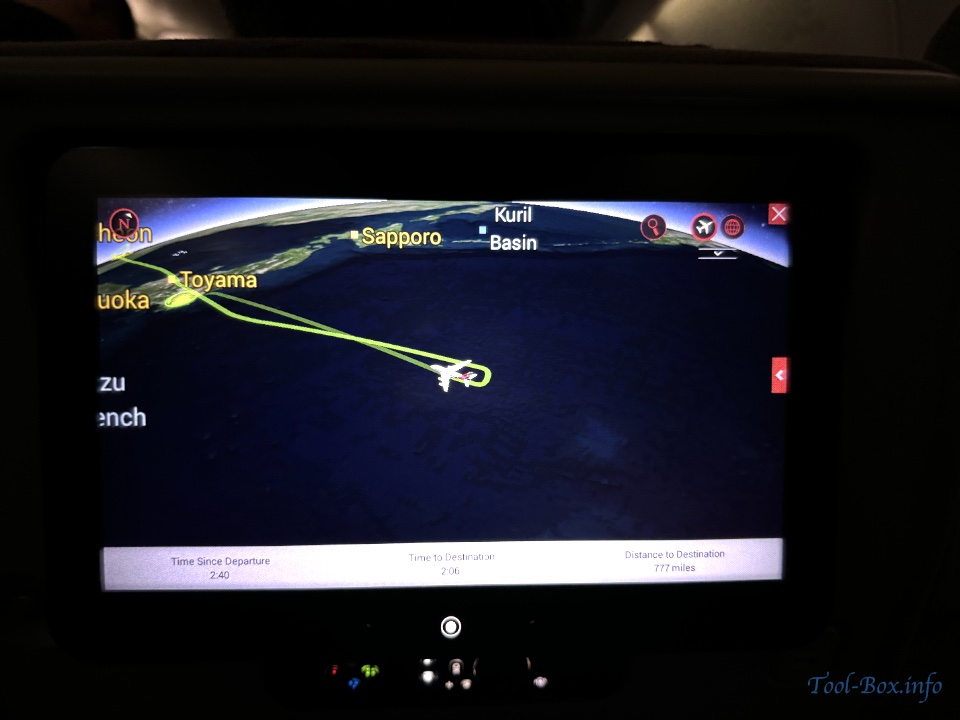
The trip wasn't easy, as the plane I took had one of the passengers falling ill mid-flight, causing an emergency landing in Tokyo Narita Int'l Airport and making the trip 6 hours longer than originally planned. Thankfully, I was able to arrive at the store before closing.
Today’s “The Toon-Box”
Posted by Wesley on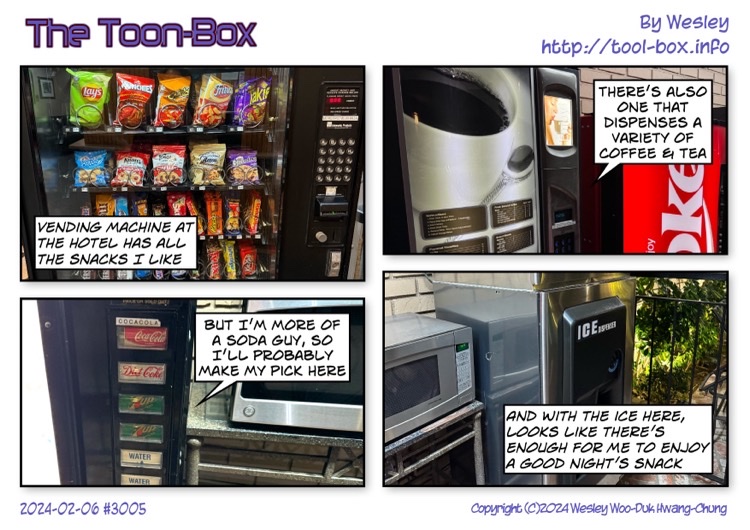
Defined tags for this entry: beverage, coffee, ice, Los Angeles, snack, soda, travel, USA, vending machine
Renewing my U.S. visa
Posted by Wesley on
The first time I traveled to United States since I left North America in the mid 1990's was back in 2006. South Korea was not on the Visa Waiver Program (VWP) at the time. So I, like most of the Korean nationals, first needed to come to the U.S. Embassy in Seoul to submit an application for a B1/B2 non-immigrant (visitor) visa and go through an interview. I wrote about the entire experience in detail, including the long lines.
The resulting visa has served me well for the past decade, even after South Korea was admitted into the VWP on November 17, 2008. This was because valid visa holders don't need to get the ESTA (Electronic System for Travel Authorization) clearance. But it ultimately expired and because I have an upcoming business trip to the States, it was time to renew it.
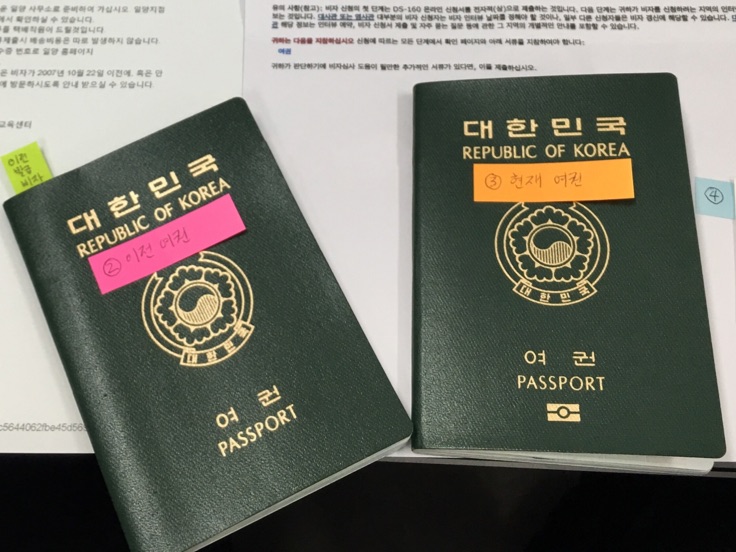
There have been considerable changes in preparation. In 2006, the "electronic" aspect was that the application forms (DS-156 & 157) were downloadable and that the interview could be scheduled online. As I write this, the form was changed to DS-160 and the entirety of it could be entered online (including the photo), needing only a simple "confirmation page" to bring in instead of the entire form. Also, payment process became simpler. There are no separate interview fee and processing fee anymore - it's all included in the processing fee now. And depositing the fee online to a uniquely generated account number (doubling as a "proof of payment") became possible in addition to the traditional option of having to visit a bank branch. However, the price has risen from $112 total to $160 for the B1/B2 visa.
Once the payment was made and the form was filled, the next step was to schedule an appointment for the interview. But since I was renewing the visa, I was apparently eligible for the Interview Waiver Program (IWP). Thanks to this, I was allowed to use the drop-box service at the interview reservation page after answering several questions to confirm my IWP eligibility.
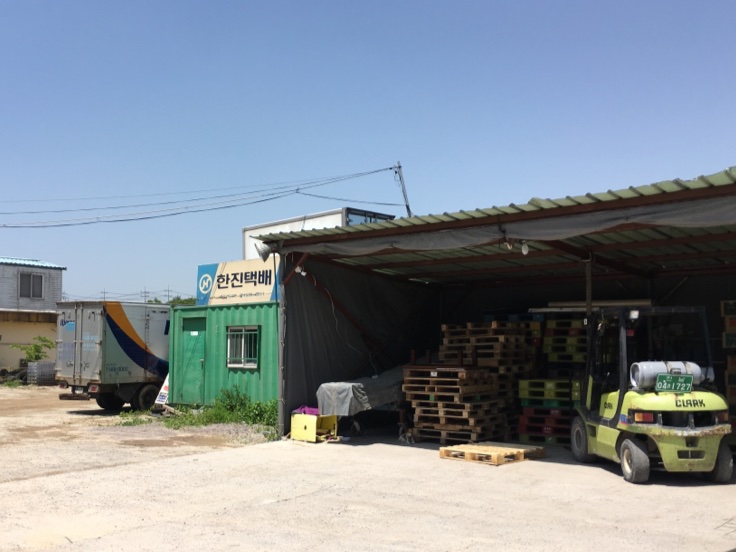
Drop-box service basically means I can "drop off" the necessary documents (passport, confirmation page, etc.) at a branch office of a contracted courier (Ilyang Logis, in this case) and it would be shipped to the embassy for processing at no extra cost. There was one such office at the small town I live in (Naju), so I decided to pay a visit. But as you can see here, it was expectedly small and the staff had no idea that such service existed. Apparently, I must have been the first person to try this at the place. After contacting the head office and getting the instructions, the staff collected the documents I brought and promised me that they would be sent soon. They had to be put into a special packaging that had to come from the head office, so in reality it took about three business days instead of going out the same day.
Continue reading "Renewing my U.S. visa"
The resulting visa has served me well for the past decade, even after South Korea was admitted into the VWP on November 17, 2008. This was because valid visa holders don't need to get the ESTA (Electronic System for Travel Authorization) clearance. But it ultimately expired and because I have an upcoming business trip to the States, it was time to renew it.

Old passport on the left, new "biometric" passport on the right
There have been considerable changes in preparation. In 2006, the "electronic" aspect was that the application forms (DS-156 & 157) were downloadable and that the interview could be scheduled online. As I write this, the form was changed to DS-160 and the entirety of it could be entered online (including the photo), needing only a simple "confirmation page" to bring in instead of the entire form. Also, payment process became simpler. There are no separate interview fee and processing fee anymore - it's all included in the processing fee now. And depositing the fee online to a uniquely generated account number (doubling as a "proof of payment") became possible in addition to the traditional option of having to visit a bank branch. However, the price has risen from $112 total to $160 for the B1/B2 visa.
Once the payment was made and the form was filled, the next step was to schedule an appointment for the interview. But since I was renewing the visa, I was apparently eligible for the Interview Waiver Program (IWP). Thanks to this, I was allowed to use the drop-box service at the interview reservation page after answering several questions to confirm my IWP eligibility.

Naju branch of Ilyang Logis and Hanjin Express
Drop-box service basically means I can "drop off" the necessary documents (passport, confirmation page, etc.) at a branch office of a contracted courier (Ilyang Logis, in this case) and it would be shipped to the embassy for processing at no extra cost. There was one such office at the small town I live in (Naju), so I decided to pay a visit. But as you can see here, it was expectedly small and the staff had no idea that such service existed. Apparently, I must have been the first person to try this at the place. After contacting the head office and getting the instructions, the staff collected the documents I brought and promised me that they would be sent soon. They had to be put into a special packaging that had to come from the head office, so in reality it took about three business days instead of going out the same day.
Today's "The Toon-Box"
Posted by Wesley on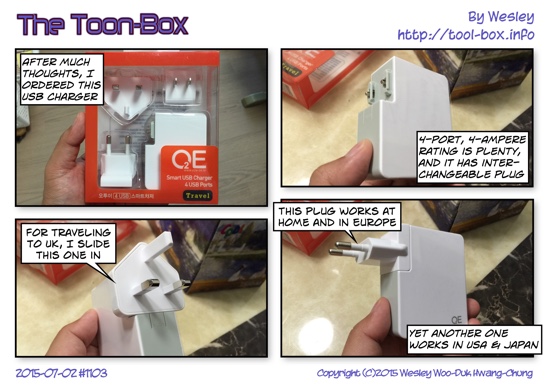
Defined tags for this entry: charger, Europe, Japan, Korea, O2E Smart Multi-Charger, power plug, UK, USA, USB
